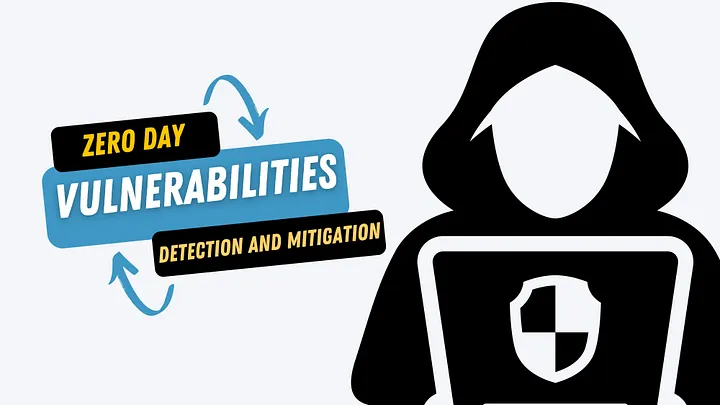Cybersecurity threats are becoming more sophisticated and unpredictable, with zero-day vulnerabilities among the most dangerous. These vulnerabilities allow attackers to exploit flaws before a patch is available. For businesses that depend on secure IT infrastructure, detecting and mitigating these threats as quickly as possible is critical for safeguarding data and protecting network infrastructure.
Zero-Day Vulnerability
A zero-day vulnerability refers to a security flaw in software or hardware that is unknown to the developer or engineer and therefore, has no official patch or fix available. The term “zero-day” implies that security analysts have had no time to address or mitigate the vulnerability before it is exploited by hackers.
Because the vulnerability is unidentified and unpatched, bad actors can engineer attacks, known as zero-day exploits, to take advantage of the weakness. Zero-day vulnerability attacks are particularly dangerous because they often bypass security measures like firewalls or antivirus software, leaving systems vulnerable and data exposed.
Why Detecting Zero-Day Vulnerabilities is So Difficult
The challenge in detecting zero-day vulnerabilities lies in their very nature, as there’s no prior knowledge of the vulnerability. Security tools like antivirus software or intrusion detection systems often rely on signature-based detection, which can only recognize threats that have been previously identified.
Zero-day exploits, on the other hand, do not have recognized signatures, making it nearly impossible for standard defenses to recognize or stop them in time. This is where advanced detection techniques come into play.
Detection Methods for Zero-Day Vulnerabilities
Preventing zero-day attacks is impossible. However, organizations can reduce their risk exposure by adopting advanced detection methods that focus on the behavior of software and systems. Behavior based threat detection focuses on detecting unusual or abnormal behavior within a system. By monitoring network traffic, system processes, and user activity, behavior-based detection can be used to establish baselines or arrive at predefined rules. With these techniques in place potential exploits can be detected when abnormal behaviors happen within a system.
Here are some of the specific methods that can be used to implement behavior-based threat detection.
AI and Machine Learning
Using advanced algorithms, Artificial intelligence (AI) and Machine Learning (ML) models can be trained to analyze large datasets of normal system behavior which will help establish a baseline of normal behavior. Anything outside the parameter considered acceptable will then be flagged as a potential vulnerability.
Read how AI and Machine Learning can be used to bolster Cyber Defense here.
Heuristic Methods
Multiple heuristic methods can be combined for a more robust approach to detecting zero-days. Of these methods, rule-based detection sets the foundation by defining suspicious patterns based on the knowledge of security analysts. Context-aware analysis takes this further by considering timing, user and the circumstances or context of an action. Anomalies that would seem normal when isolated can be detected when context-aware analysis is applied. For example, a legitimate action performed at an unusual time or by an unexpected user.
Finally, correlation engines embrace a holistic approach which allow for the detection of zero-day attacks that may have gone undetected by other heuristic methods. For example, several seemingly harmless behaviours reported by rule-based and context-aware systems, along with slight statistical abnormalities, might cause a correlation engine to issue a high-priority warning, potentially detecting a zero-day attack in progress.
Mitigation Techniques: Reducing the Risk
While detection is essential, mitigation is equally critical to minimize damage from zero-day vulnerabilities. Here are some best practices for reducing risk.
Regular Patch Management: While zero-day attacks happen before a patch is available, it’s important to apply patches as soon as they are released. Regular software updates reduce the risk of exploitation once a patch has been issued.
Network Segmentation: By segmenting your network, you can contain potential attacks to one part of the system, preventing them from spreading. This limits the impact of a zero-day exploit while giving your IT team time to respond.
Application Whitelisting: Limit which applications can run on your systems. Whitelisting trusted software prevents unauthorized or suspicious applications from executing, reducing the likelihood that malicious code from a zero-day attack will run.
Security Awareness Training: Human error often plays a role in the success of zero-day attacks. Providing regular cybersecurity training for employees can help reduce risky behaviors, such as clicking on unknown email attachments or visiting suspicious websites.
Zero-Trust Architecture: Zero-trust minimizes the risk of unauthorized access and lateral movement within a network by simply operating on a principle that no entity should be trusted regardless of their presence within a network. Read more on ZTA here.
Final Thoughts: Proactive Defense is Key
Zero-day vulnerabilities represent one of the most dangerous threats in the cybersecurity landscape. While detection is complex and mitigation can be challenging, the key to reducing your exposure lies in being proactive. Utilizing behavior-based threat detection, regular patch management, and network segmentation can make all the difference in protecting your organization’s critical infrastructure.
Investing in modern detection tools and staying vigilant against emerging threats will enable your organization to stay one step ahead of attackers.
Are you prepared to handle the next zero-day attack? Take steps today to strengthen your security posture with Advanced threat detection and proactive mitigation strategies.


